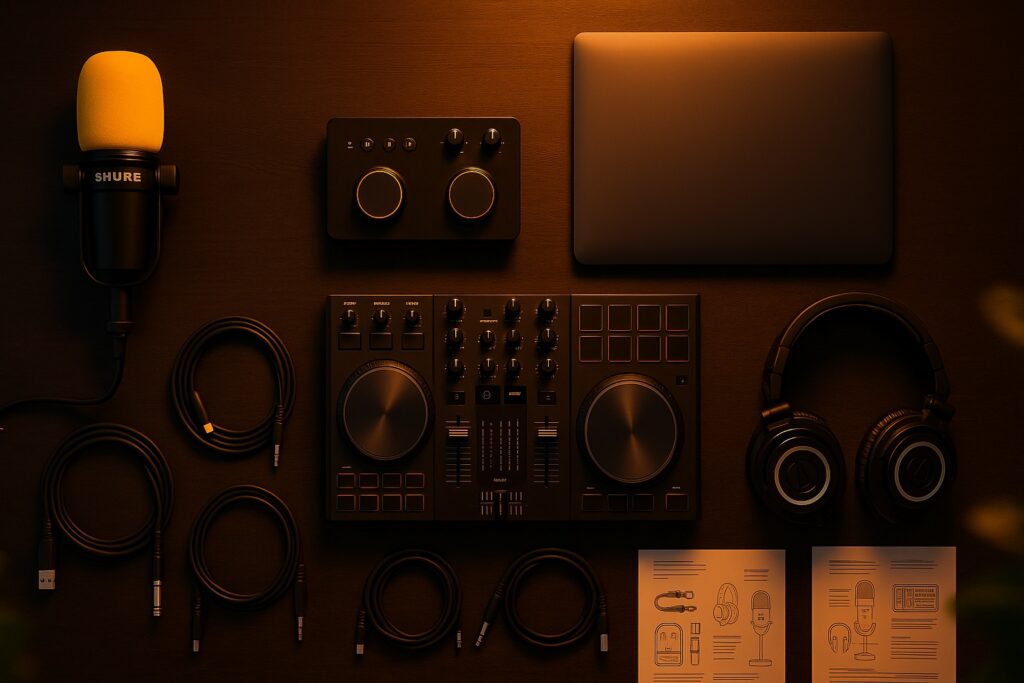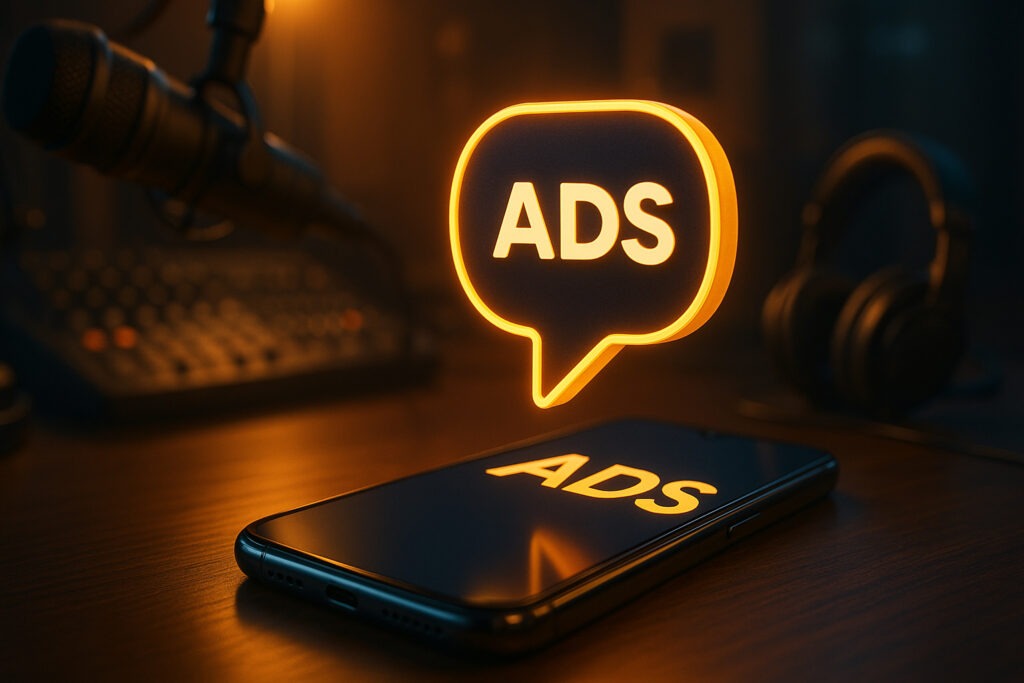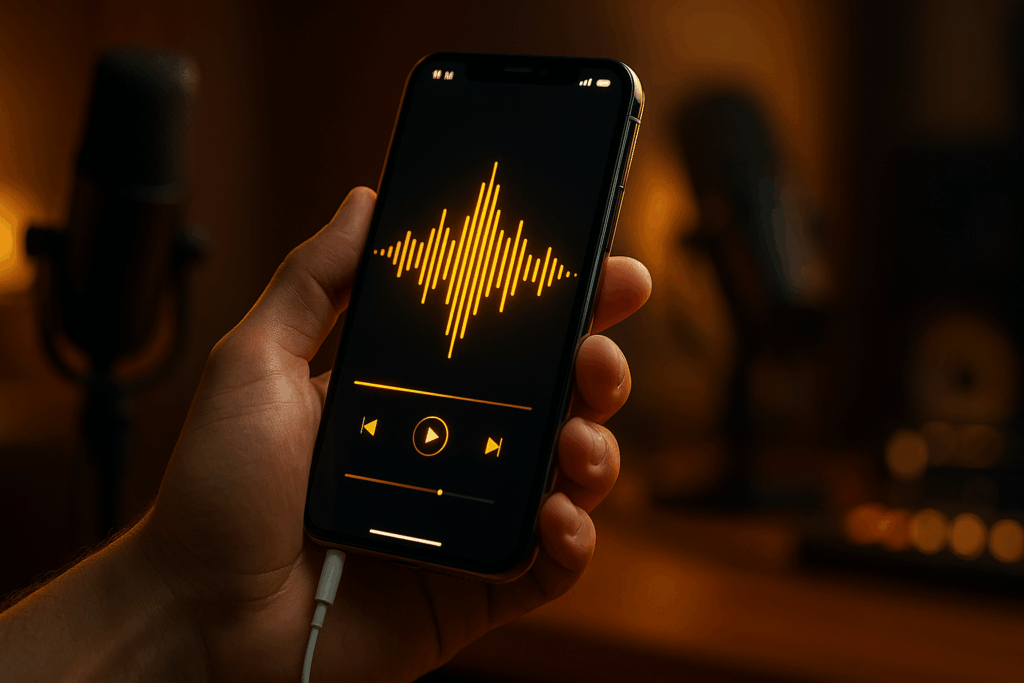Elevate Your Audio Quality: Technical Tips & Gear for Radio Broadcasters
Whether you’re launching your own online radio station, hosting a podcast, or running a live DJ show, one thing is essential: high-quality audio. A great broadcast isn’t just about great content—it’s about how it sounds. Listeners notice clarity, consistency, and professionalism—and with the right tools, you can deliver all three from your home setup.

In this article, we’ll walk you through the core gear every broadcaster should have, from microphones to software and automation tools. All recommendations are based on industry standards and practical experience with online broadcasters around the world, especially those using Zeno.fm.
1. Microphone: The Core of Your Sound
The microphone is the first and most crucial piece of your broadcasting toolkit. It directly affects how your voice is captured, processed, and experienced by your audience.
There are two main types of microphones for home broadcasting:
- Condenser microphones, which are more sensitive and provide better detail and warmth—great for voiceovers and studio-style recordings.
- Dynamic microphones, which are more rugged, handle high volumes well, and reject background noise—perfect if you’re broadcasting in a less-than-perfect acoustic environment.
Recommended Microphones:
- Shure MV7 / MV7+: Hybrid XLR/USB dynamic mic. Great build quality and excellent voice isolation; delivers broadcast‑quality sound for serious podcasters and streamers.
- Samson Q2U: USB/XLR dynamic mic. Budget‑friendly option with dual-output—great for making backups or transitioning from beginner to pro setups.
- Audio-Technica AT2020 USB+: USB condenser version of the AT2020. Offers good clarity and minimal background noise—recommended for beginners setting up their first home studio.
- Shure SM58: Known as the “workhorse” of mics, perfect for rugged daily use.
- Rode NT1-A: One of the quietest mics on the market, with incredible vocal fidelity.
Setup Tips:
Always pair your mic with a pop filter to reduce harsh consonants (like “p” and “b” sounds) and a boom arm or mic stand to stabilize positioning and reduce desk noise.
2. Audio Interface: Your Sound Gatekeeper
An audio interface acts as the middleman between your microphone and your computer. It converts analog sound into digital format and ensures your voice reaches your audience with minimal distortion and delay.
Unlike plug-and-play USB mics, XLR microphones require an interface to function. Even if you’re using a USB mic, upgrading to an interface can still boost overall sound quality by reducing latency and offering better gain control.
Why it matters:
- Reduces audio lag (latency)
- Lets you monitor your voice in real time with headphones
- Offers phantom power for condenser mics
Recommended Interfaces:
- Focusrite Scarlett 2i2: Known for crystal-clear preamps and simple setup.
- Behringer UMC22: Budget-friendly and effective for basic setups.
- M-Audio AIR 192|4: A great option for solo broadcasters.
3. Mixer or DJ Controller: For Live Show Control
If you plan on mixing audio live—whether that’s blending music, bringing in callers, or playing pre-recorded segments—a mixer or DJ controller offers complete real-time control.
Mixers allow you to:
- Adjust volume levels of multiple audio sources
- Crossfade music or intros
- Add effects like reverb or compression
- Route input from phones or external devices
For DJs, a controller with jog wheels and pads will make beatmatching and cueing easier. For talk shows, simpler mixers with faders and mic preamps are more than enough.
Recommended Options:
- DJs: Pioneer DDJ-FLX4, Numark Mixtrack Pro FX
- Talk-based shows: Behringer Xenyx Q802USB, Rodecaster Pro
4. Computer & Broadcasting Software
Even the best mic won’t perform if your computer can’t keep up. A modern laptop or desktop with at least 8GB of RAM and a stable internet connection is essential for seamless live streaming.
You’ll also need a broadcasting software to manage your stream and connect to platforms like Zeno.fm.
Recommended Software:
- BUTT – Simple, free encoder that streams directly to your Zeno.fm station
- Mixxx – Open-source DJ software with playlist automation and live streaming capabilities
- RadioBoss, SAM Broadcaster, Virtual DJ – Professional software with advanced features for scheduling, track rotation, and live shows
Pro tip: Always run a speed test before going live. Aim for upload speeds of at least 5 Mbps to ensure clean transmission.
5. Music & Media Sources: The Content Backbone
You need a library of media content to keep your show engaging—whether that’s music, intros, sound effects, or interviews.
Your media can come from:
- Digital libraries (MP3s, WAVs)
- Spotify (offline playlists only!)
- iTunes or Apple Music downloads
- USB drives and mobile phones connected to your mixer
- Pre-recorded shows stored in your Zeno Tools dashboard
⚠️ Legal Reminder: Make sure your content is properly licensed, especially when using copyrighted music. It is the content creator’s responsibility to register with their local music rights organization to ensure proper licensing.
6. Monitoring Headphones: For Accurate Feedback
For monitoring your show accurately, closed-back headphones remain the industry standard. These allow you to hear your broadcasting output without bleed, feedback, or interference from ambient noise. Among the top picks in 2025:
- Audio-Technica ATH‑M50x is still frequently recommended as a reference closed-back headphone for studio work thanks to its balanced sound and reliability.
- AKG K72 is another notable model for those on a tighter budget—praised in recent reviews for clarity and sound balance.
Other excellent options to consider:
- Sony MDR‑7506 — a long-standing favorite in broadcast environments
- Beyerdynamic DT 770 Pro — strong isolation and comfort for long hours
- Beyerdynamic DT 1770 Pro MKII — for advanced users (reviewed positively for fidelity)
Use closed-back, over‑ear models with a flat or neutral sound profile. Avoid open-back or Bluetooth models for live broadcasting, as they can lead to audio leakage or latency issues.
7. Cables & Accessories: Don’t Overlook the Details
Every good setup needs reliable cables and support accessories to keep it running smoothly. These small items often get overlooked but can make or break a session.
Checklist:
- XLR cables – for connecting your mic to an audio interface or mixer
- USB cables – for power and digital audio
- Mic stands – boom arms reduce vibrations and desk noise
- Shock mounts – minimize mechanical noise
- Soundproofing – foam panels can dramatically improve room acoustics
Optional:
- Audio splitters for dual input
- External speakers for casual playback
- Stream deck for fast audio control (mute mic, play jingle, etc.)
Bonus: Cloud Automation & Live Switching with Zeno.fm
At Zeno.fm, flexibility is at the heart of your broadcasting experience — whether you’re live, offline, or somewhere in between.
- AutoDJ: Included with all Zeno accounts, AutoDJ serves as your default fallback stream. Upload your music, jingles, or recorded shows to build a continuous playlist that plays whenever you’re not broadcasting live. It’s a simple but powerful way to keep your station active 24/7 without manual intervention.
- Automation Software by Libretime (included in Prime and higher plans): For broadcasters who want to level up, Zeno offers integrated automation tools starting with the Prime plan. With Libretime, you can:
- Schedule playlists by date and time
- Automate shows, jingles, intros, and outros
- Manage your full broadcast calendar with precision
- Schedule playlists by date and time
This professional-grade automation is ideal for stations with regular programming or those aiming to deliver a polished, radio-style experience without needing to be live at all hours.
Whether you choose AutoDJ—for a simple, always-on playlist—or Libretime Automation—for advanced scheduling and content planning—Zeno.fm offers the right tool to keep your station consistent, high-quality, and listener-ready, around the clock.
Final Thoughts
Your audience deserves the best version of your voice—and that starts with your gear. Whether you’re building your first home studio or upgrading an existing one, investing in high-quality broadcasting equipment will take your content to the next level.Explore broadcasting features, monetization tools, and global distribution with Zeno.fm, the all-in-one platform for modern broadcasters.
September 30, 2025

